When You Want Color
When your shade trees grow as you hope they can leave you with a blank slate for landscaping. You find that all the shrubs and turfgrass have faded away. You’ve replanted with shade-tolerant species, but now you’re wondering how to create a little visual interest. How can you bring color into the shadows? What are your choices?
I’ve faced those same questions in the 41 years that we’ve lived beneath pecan trees. They were mid-sized at first, but now they’re veritable giants, and turfgrass is a distant memory. The plants I’ve detailed in the shrubs and groundcovers stories in this issue give you those details, but now it’s time for the finishing touches.
Ways I’ve coped with our shade…
Please let me say first that our landscape, while attractive, isn’t any nicer than hundreds of others around our part of Texas. But it’s the one with which I’m most familiar, so it’s the one from which I will teach.
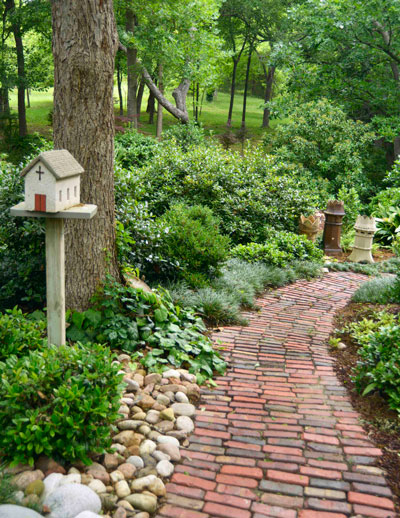
Garden art, river rock and antique brick pavers draw attention to this part of the Sperry backyard.
I knew I wouldn’t be able to get many flowering plants to thrive in all the shade. I scoured antique malls and salvage yards, and I was lucky enough to find a pile of old street pavers dating back to the late 1890s and early 1900s. I bought enough to run a sweeping path through our garden, so the need for turf as a walking surface was replaced.
Next, I wanted a few strong focal points in my garden, so I built a wood church from really old salvaged lumber. Unfortunately, my church and its old lumber finally decayed, and it’s made its final trip to another salvage pile. But, I found a more modern replacement, and it became the star of its part of our gardens. It’s made of some type of concrete material, so it probably needs to go into the will.
Those ceramic “things” you see at the other end of the walk are actually antique English chimney pots. They topped rather ordinary chimneys on the South Coast of England before those tall houses were razed and the pots shipped to my yard (and elsewhere).
For a little variety, I’ve assembled river rock along a couple of sections of the walk. It brings a nice light tone to its surroundings, and it holds the soil well. It also is extremely bold-textured, and that’s a nice contrast to all the fine-bladed mondograss I use as my groundcover.
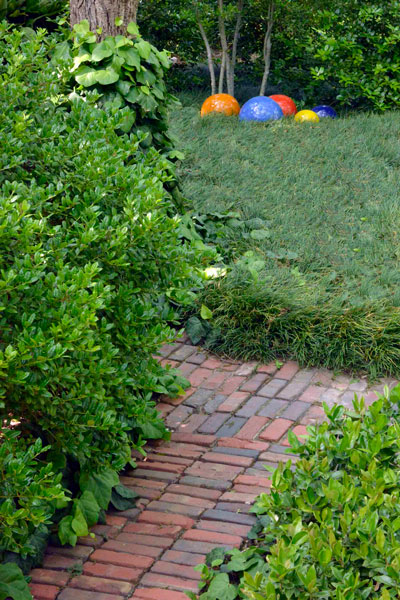
Ceramic globes provide a spot of color in a sea of green in one of the shadiest parts of the Sperry landscape.
Finally, just for whimsy and a little permanent color, I’ve put several ceramic globes out in the mondograss. I’m a bit obsessive about these things. I actually have six or seven more in other parts of our gardens.
Flowering shrubs…
In addition to the evergreen shrubs I’ve detailed in that part of e-gardens this week, I also have a couple of flowering shrubs in our backyard. Mock orange (Philadelphus sp.) has small, semi-double white blooms in early May, and oakleaf hydrangeas bear their giant flower heads about the same time. White shows well in a shady garden, and each of these seems to be prospering.

Oakleaf hydrangea and mock orange bloom while statues create focal point we see from our sunroom.
Flowering vines…
If I wanted to grow spring-flowering vines in a part of my shade garden, I’d turn to Carolina jessamine, sweet autumn clematis, evergreen clematis or crossvine.

Carolina jessamine
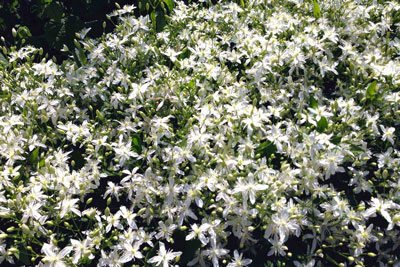
Sweet autumn clematis
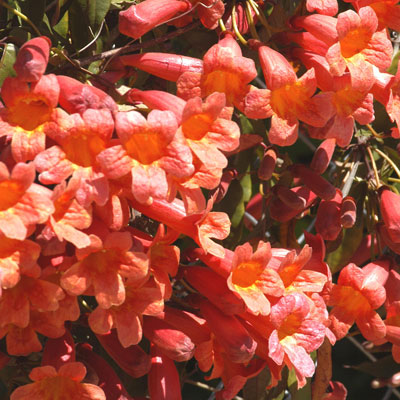
Crossvine
Annuals…
For annuals I’d choose from coleus, caladiums, elephant ears, begonias, impatiens, nicotiana (flowering tobacco) and pentas (partial sun).

Red Dragon Wing begonias
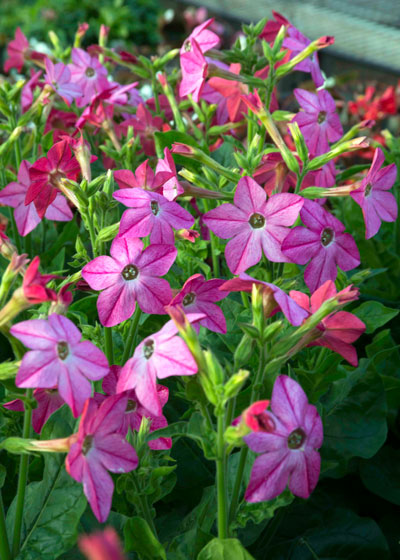
Perfume Bright Rose Nicotiana
Perennials…
For perennials I’d select from ajuga, oxalis, summer phlox, hostas, hellebores, Solomon’s Seal, ferns, Texas Gold columbines and various bulbs such as jonquils, spider lilies, naked lady lilies, oxblood lilies and fall crocus.
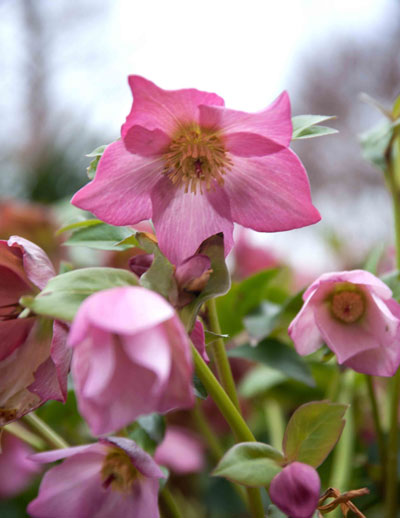
Rose hellebore
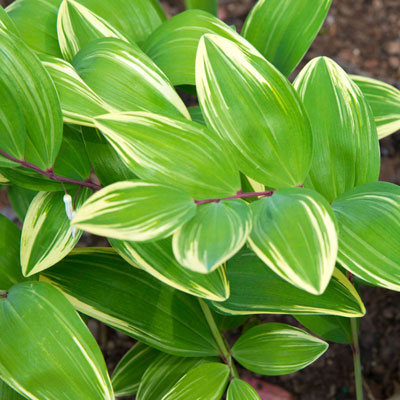
Solomon’s Seal
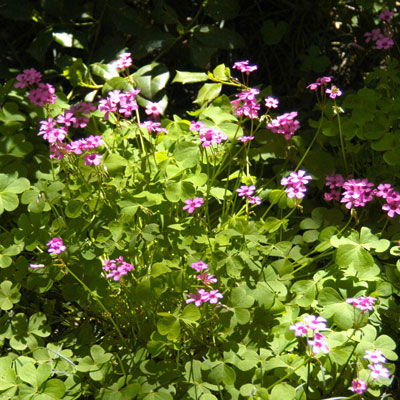
Oxalis
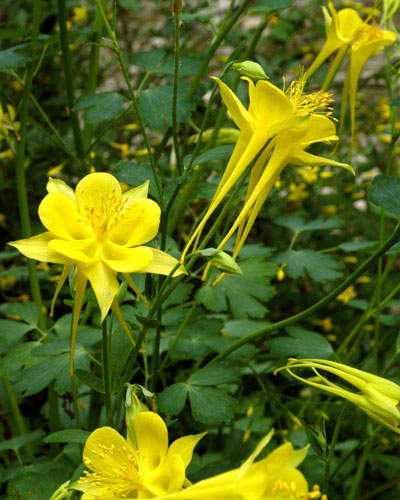
Columbine Texas Gold
Tropical interest…
I get a lot of bang for my bucks with tropical plants, not only for their colorful foliage but also for their fascinating textures. That list includes crotons, Xanadu philodendron, aglaonemas, ferns, sansevierias, pony tail, peace lilies and dracaenas.
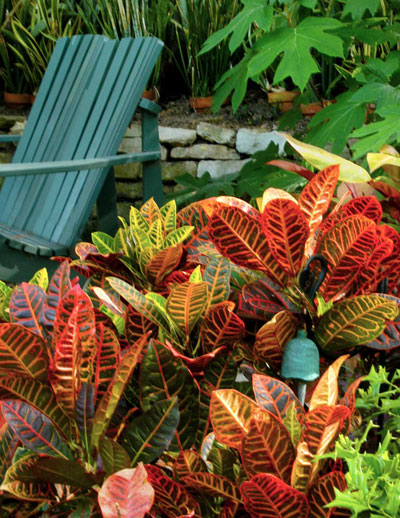
Crotons color up the Sperry landscape with minimal sun.

Bromeliads, sansevierias add dramatic color, but need shade after mid-morning.
